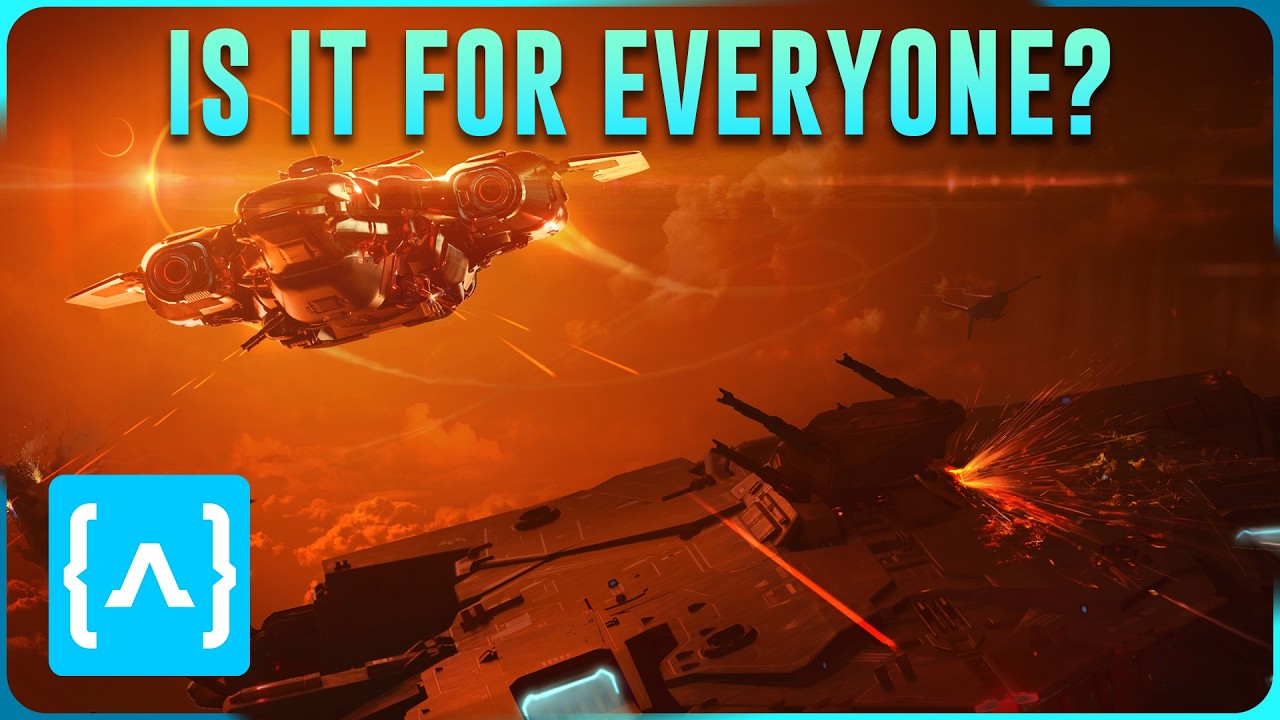The video discusses how Star Citizen’s shift towards frequent limited-time events and combat-focused activities may limit its appeal for non-combat players and create server and community issues. The presenter emphasizes the need for more persistent, diverse gameplay, better communication, and inclusive content to truly make the game a welcoming experience for everyone.
The video discusses the evolving content strategy of Star Citizen, highlighting the shift towards more regular dynamic and one-time events, such as supply or die and align and mine. While these events aim to increase engagement, they also raise concerns about community reactions and whether the game truly caters to everyone. The presenter questions if this new content approach aligns with Star Citizen’s goal of being a game for all types of players, noting that the focus on limited-time events can create issues with player participation and server stability.
The speaker emphasizes that player behavior, especially the rush to complete time-limited rewards, can lead to server performance problems and player burnout. These events often attract large crowds immediately after patches are released, causing uneven server loads. To foster long-term engagement, the game needs more persistent progression systems and diverse missions outside of big events. Currently, reputation-based progression is still developing, and many sandbox activities like mining and salvage do not contribute to player progression, which may limit their appeal for some players.
The discussion also touches on the structure of events, noting that many require combat to complete, which may alienate non-combat players. While some events like supply or die involved non-combat activities, others like Save Stanton heavily depend on combat. The presenter advocates for making rewards more accessible without combat, suggesting that future updates could include more non-combat missions, such as simple delivery or repair tasks within landing zones, to diversify gameplay and increase activity variety for players with different interests and time constraints.
Messaging and communication issues are highlighted as another concern. The presenter criticizes statements made during official shows, such as calling industrial players cowards or misrepresenting non-combat events as combat-heavy, which can create misunderstandings and negative perceptions. While some comments may be taken out of context or said in jest, they still risk damaging the community’s trust. The presenter suggests that better moderation, editing, and follow-up questions could help prevent such miscommunications and maintain a positive relationship between developers and players.
In conclusion, the video argues that Star Citizen’s goal of being a game for everyone is achievable but will require ongoing development effort, especially in areas like reputation systems, non-combat activities, and better communication. The current focus on combat content is largely due to resource allocation and internal priorities, but there is hope that future updates, such as the introduction of more industrial faction systems, could expand the game’s appeal. Overall, the presenter sees a positive path forward, emphasizing that the game’s development is progressing and that with continued effort, Star Citizen can become a more inclusive and engaging experience for all players.
